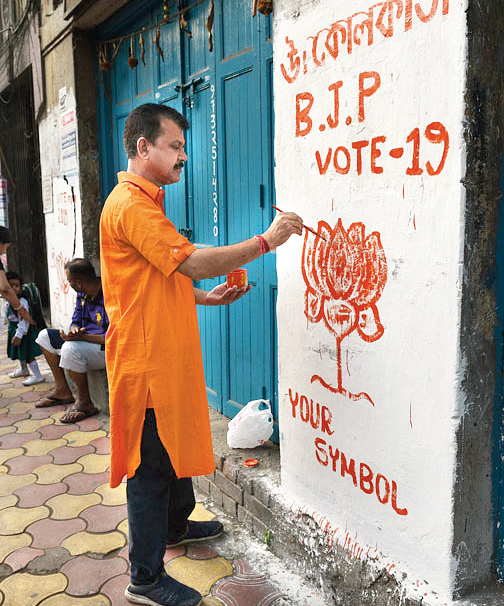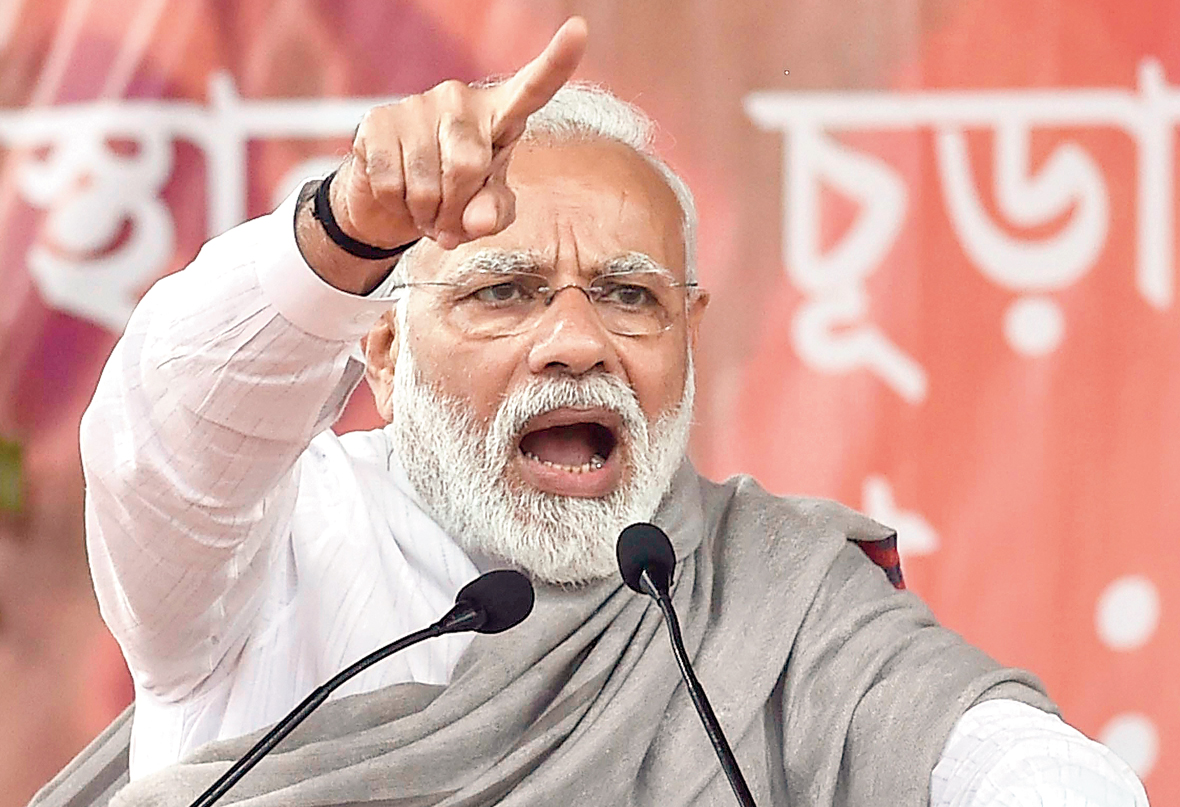The phenomenal growth in public support for the Bharatiya Janata Party in West Bengal was unquestionably one of the biggest news points of the 2019 general election. The party’s popular vote rose from 17 per cent in 2014 to 40 per cent in 2019 and its Lok Sabha tally increased from two seats to 18. There are suggestions that had it not been for the climate of violence and intimidation, the BJP’s share of seats and the popular vote would have been greater.
In any event, the BJP’s performance in West Bengal was nothing short of spectacular. Most political pundits who had expected the party to gain in votes but fail to convert these into seats were taken by surprise, as was the chief minister who entered the 2019 election expecting a walkover on her home turf. The post-election convulsions in the Trinamul Congress are, to a very large extent, the consequence of an outcome that showed up the ruling party as very vulnerable. Although the appeal of Prime Minister Narendra Modi played a big role in securing an additional 16 seats for the BJP, it is now being realized that the outcome was as much a verdict on the growing popular dissatisfaction with the state government, particularly among Hindus. As the state reels from a bout of post-poll political violence, the focus has shifted to the assembly election of 2021. Will the BJP be able to consolidate its gains, surge the extra mile and unseat Mamata Banerjee, or will the dynamics of an assembly election benefit the regional player?
It is important to note that the rise of the BJP in West Bengal has followed a different trajectory than in other parts of India. Whereas in most other states where the BJP is now an established player political success had invariably been preceded by sustained groundwork by either the Rashtriya Swayamsevak Sangh or organizations linked to it, in West Bengal, however, the RSS presence has been extremely patchy and mainly confined to the border districts. More important, the RSS wasn’t able to translate even this limited presence into social influence.
Likewise, even the rapid growth of the BJP nationally after 1990 in the wake of the Ayodhya movement didn’t leave any lasting impact on West Bengal. The party did win two Lok Sabha seats in 1999, blending the local influence of its two candidates — Tapan Sikdar in Dum Dum and Satyabrata Mukherjee in Krishnanagar — with an alliance with the TMC. It could not, however, use this as a launch pad for further expansion. In hindsight, it can be said that the entire dividend of its alliance with the TMC between 1998 and 2006 accrued to Banerjee. The BJP bankrolled the TMC in its early — and most difficult — years but gained little from it. Till the arrival of Narendra Modi in 2014, coinciding with the steady decline of the Left, saw it emerge as a significant third party, the BJP in West Bengal had reconciled itself to the routine business of losing deposits in elections.
The importance of the Left’s marginalization in the rise of the BJP after the assembly election of 2016 shouldn’t be underestimated. In the 1950s, an important core support for the Jana Sangh had come from dispossessed Hindus from Pakistan. In West Bengal, however, following the death of Shyama Prasad Mookerjee in 1953, the Hindu refugees from East Pakistan drifted to the Left, leaving the Jana Sangh high and dry. In the Hindi-speaking areas, the Jana Sangh and the Lohia socialists had competed for the anti-Congress space. In West Bengal, the communists occupied the space and monopolized it. Wedged between opposition to both the Congress and the Left, there was little or no space for saffron politics. It was the decimation of the Left at the hands of the TMC — a period that coincided with the growing national importance of the BJP — that has redefined politics in West Bengal.
Yet, the state BJP has often not succeeded in availing all the political opportunities that have come its way. This can be explained by two factors.
First, for reasons that date back to the Hindi agitation of the mid-1960s, saffron politics in West Bengal has suffered from a cultural estrangement. Despite the fact that the intellectual inspiration of Hindu nationalism has come largely from Bengal, it was the Hindi belt that set the tone for the Jana Sangh and the BJP from the 1960s. It established a stereotype that, in recent months, Banerjee has been trying to leverage for political advantage. Like Amartya Sen’s disdain for the ostensibly Hindi-belt connotations of ‘Jai Shri Ram’, the TMC and its supporters have attached great importance to the Bengali bhadralok’s disdain for anything that has Hindi-belt connotations.
Yet, the importance of this revulsion should be placed in a context. The disaggregated analysis of the 2019 election in West Bengal indicates that the vote which catapulted the BJP’s success came principally from adivasis, backward castes and Dalits — communities that are, in turn, culturally detached from the archetypal Bengali bhadralok babu. A perusal of the names of BJP workers killed in the recent political clashes — some for merely chanting ‘Jai Shri Ram’ — would indicate that the culture war is playing out differently in the districts and not necessarily along the lines the chief minister of West Bengal would prefer.
Finally, the BJP in West Bengal has been hamstrung by a leadership problem. The party has never suffered from a lack of enthusiasts. Its problem has been the lack of social reach of individuals who view the party more like a cosy club rather than a mass organization. It was often said in jest that BJP leaders valued securing the party nomination for elections much more than actually winning. In today’s context, this has meant that a rapidly expanding party has swung sharply between opening its doors to everyone — including individuals who can be best described as dodgy — and operating like a sect where membership is reserved for a select few.
The issue of how best to expand and how to integrate newcomers in a mass party is no doubt difficult to handle. As of now, with electoral success coming its way, the BJP seems to be getting a little traumatized by the sheer rapidity of its popularity surge. This worked in its favour during the Lok Sabha election where it won seats and polled huge numbers of votes despite being able to find agents in only 30 per cent of the booths. However, assembly elections are not so impersonal and local considerations are paramount. As of now, the party isn’t fully prepared to meet the challenge. In the coming days, it will have to either develop leaders with local roots or import them from other parties, but without being seen as a carbon copy of a discredited political culture built on corruption and high-handedness.
In the past, local BJP leaders have often complained of the national party’s relative unconcern for the state unit. That changed sometime in mid-2018, a shift that broadly coincided with the induction of Mukul Roy and a section of the TMC into the BJP. Today, West Bengal has become an important priority for the national party and there is a realization that a template approach to the state’s politics will not work. However, alternative strategies are not intellectual exercises; they evolve through a process of hits and misses. The way the BJP goes about the business of challenging Mamata Banerjee — and her response — will be enthralling. Neither side should be underestimated.













